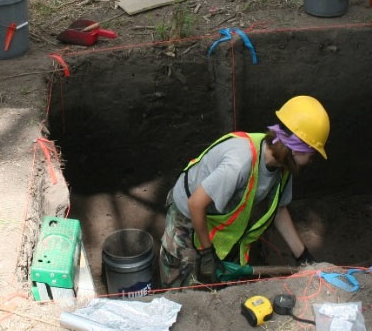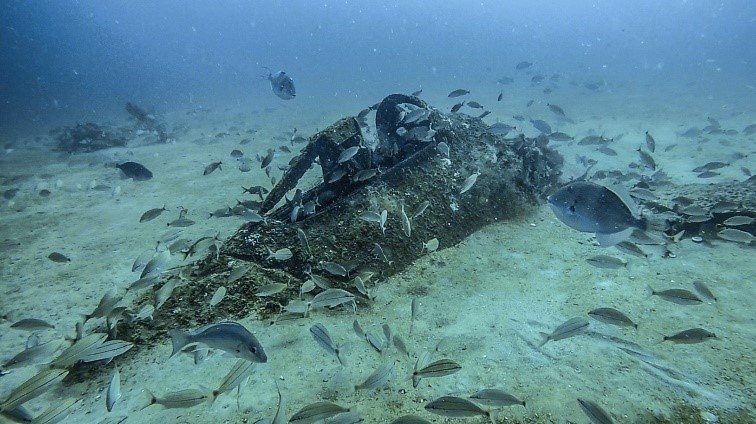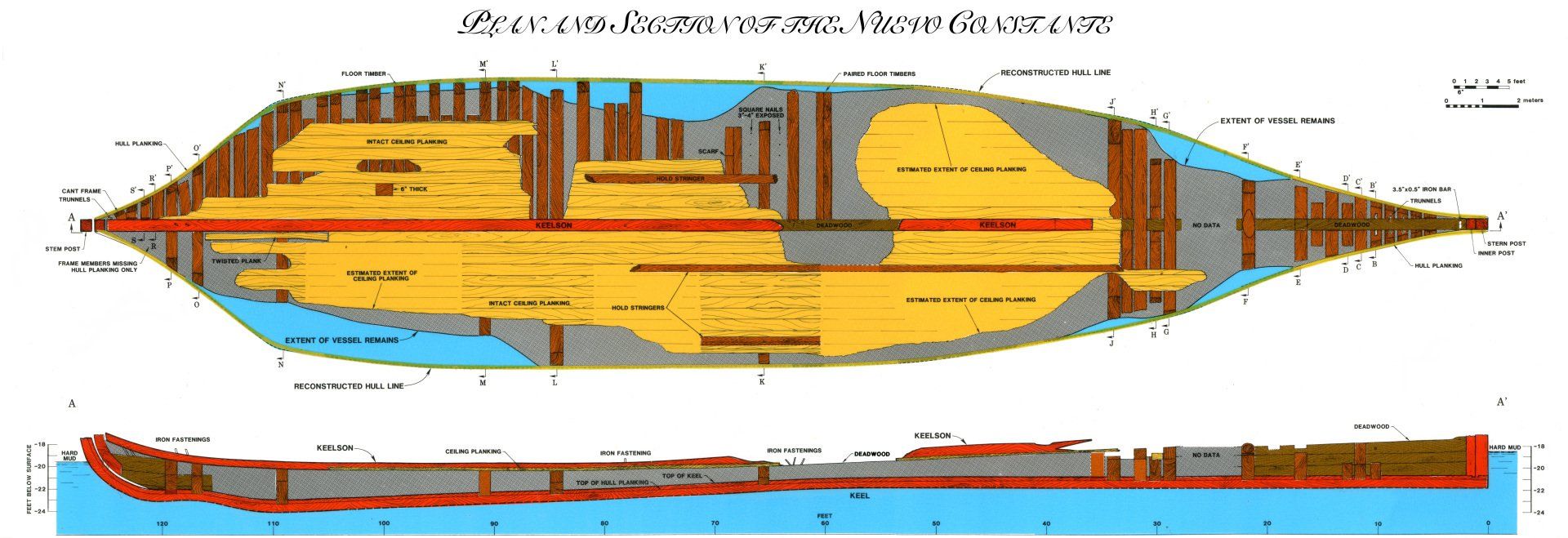Cultural Resources
Cultural resources investigations conducted by Coastal Environments, Inc., have helped both governmental and private-sector clients meet the requirements of the NHPA for over 50 years. Much of CEI’s research focuses on the Lower Mississippi River Valley and the Northern Gulf Coastal Plain, but we conduct remote sensing and underwater archaeological investigations worldwide. CEI emphasizes a multi-disciplinary approach and utilizes the expertise of archaeologists, historians, geographers, geologists, biologists, architects, and other natural and social scientists.
- Cultural Resources Surveys
- Archaeological Site Testing
- Underwater Archaeology
- Artifact Conservation
- Management Plans & Popular Reports
- National Register of Historic Places Evaluations
- Museum Displays
- Remote Sensing
- Archaeological Data Recovery
- Historical Overviews & Archival Research
Architectural investigations
- Architectural Surveys
- Property and Structure historical Documentation
- NRHP Evaluations and Nominations
- HABS/HAER Documentation
Land Use Histories & Documentation
- Historical Overviews and Archival Research
- Agreement Documents (MOA and PA)
- Section 106 Adverse Effects Documentation
CEI’s professional staff of archaeologists, historians, geographers, GIS specialists, and geologists applies a multi-disciplinary approach to the study, documentation, interpretation, and preservation of the past. Since its founding in 1967, CEI has performed over 900 cultural resources investigations, ranging from small-scale surveys to large-scale, multi-year projects, including Phase I survey, Phase II testing, and Phase III data recovery.
- Artifact Conservation and Stabilization
- Historical Archaeology
- Prehistoric Archaeology
- Cartographic Reconstructions
- Historical Investigations
- Standing Structure Surveys
- Industrial Archaeology
- Urban Archaeology
- Geoarchaeological Investigations
- Battlefield Investigations
TERRESTRIAL ARCHAEOLOGICAL INVESTIGATIONS
The Cultural Resources Division of Coastal Environments, Inc., (CEI) has helped governmental and private-sector clients meet the requirements of the National Historic Preservation Act for nearly a half century. CEI’s professional staff of archaeologists, historians, geographers, GIS specialists, and geologists applies a multi-disciplinary approach to the study, documentation, interpretation, and preservation of the past. Since its founding in 1967, CEI has performed over 600 cultural resources investigations, ranging from small-scale surveys to large-scale, multi-year projects, including Phase I survey, Phase II testing, and Phase III data recovery
- Artifact Conservation and Stabilization
- Historical Archaeology
- Prehistoric Archaeology
- Cartographic Reconstructions
- Historical Investigations
- Standing Structure Surveys
- Cemetery Delineations
- Industrial Archaeology
- Urban Archaeology
- Geoarchaeological Investigations
- Plantations Archaeology
Crew member excavating at the Dimond Knoll site (41HR796), Harris County, Texas, for the Texas Department of Transportation.
UNDERWATER ARCHAEOLOGY
Remains of a Grumman Bearcat (F8F) fighter plane submerged in the Gulf of Mexico off Pensacola, Florida.
Submerged cultural resources include historic shipwrecks and sunken aircraft, as well as submerged prehistoric archaeological sites and their associated landscapes which have become inundated by rising sea levels since the last ice age.
CEI’s Marine Archaeology Division provides a wide range of cultural resource services to support our private and public sector clients. Since its founding in 1967, CEI has performed over 900 cultural resources investigations ranging from small-scale surveys to large-scale, multi-year projects for federal, state, and local governments, oil and gas developers, engineering firms, and non-profits
Coastal Environments Inc. staff has experience in providing Section 106 compliance, geophysical surveys, offshore Qualified Marine Archaeologist support, and diver investigations for projects around the United States and worldwide.
Plan view of the remaining hull of the Nuevo Constante, a Spanish merchant vessel wrecked off the coast of Cameron Parish, Louisiana, during a hurricane in 1766.
Survey Types and Services:
- Geophysical data acquisition, processing, interpretation, and reporting
- Desktop studies, permit acquisition and advice, and Section 106 compliance
- Submerged prehistoric landscapes assessment and Paleoenvironmental reconstruction
- Qualified Marine Archaeologist (QMA) and Client Representative
- Shipwreck and historic resources assessment
- Diver investigations
- Hazards and obstructions surveys
- Directing and coordinating ROV and commercial diver surveys for the offshore energy sector
- Archaeological monitoring plans
- Processing, interpretation, assessment, and reporting of third-party and legacy data
- National Register of Historic Places Nominations
- Artifact conservation and curation
- Project management
CEI maintains both survey and dive vessels necessary for any underwater investigation within inland rivers, coastal bays and estuaries, and the nearshore margin of the Gulf of Mexico
Notable Project:
• Nuevo Constante, a Spanish merchant vessel sunk in a hurricane in 1766 on the southwestern Lthe USS Eastport, a Union ironclad gunboat sunk in Red River, Louisiana
• CSS Arrow, a Confederate gunboat sunk in the West Pearl River, Louisiana
• SS Mary, a nineteenth-century sidewheel steamer sunk in Aransas Pass, Texas
• Several late-nineteenth- and early-twentieth century vessels sunk in Lake Erie off the coast of Ashtabula County, Ohio.
• 8,000-year-old drowned and buried prehistoric shell midden located ca. 19 feet beneath the bottom of the Gulf of Mexico about eight miles offshore the mouth of the Sabine River.
Contact: Rob Westrick
Email: rwestick@coastalenv.com
Phone:
(225) 383-7455 EXT 108
Our Clients:
Data-Recovery excavations at site 41CL59, Calhoun County, Texas, for the Galveston District, U.S. Army Corps of Engineers.
Browse Our Website
Business Locations
- Corporate Office 1260 Main St, Baton Rouge, LA 70802, United States
- New Orleans, LA Office 2045 Lakeshore Dr, New Orleans, LA 70122, United States
- Houston, TX Office 1500 McGowen St, Houston, TX, 77004, United States
- Corpus Christi, TX Office 525 S Carancahua St, Corpus Christi, TX, United States
- Biloxi, MS Office 812 Water St, Biloxi, MS, United States






